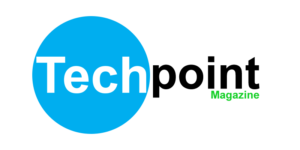The evolution of communication technologies has for the past 2 decades upgraded from 1G which enabled users to make Voice calls, 2G that introduced Short Messages (SMS) and Multi-Media Messages (MMS) in the 90s, to 3G as an Internet connection enabler paving way for 4G as the current fast connection technology making Video sharing and streaming possible.
Now, 5G is the latest communications technology that is currently in its late design and deployment stages. With 5G, low latency is expected to be the main factor with applications running in Virtual Reality (AR), Augmented Reality (AR), and the Internet of Things (IoT) as much anticipated use cases.
However, with the emergence of 5G comes a rising need to secure user traffic and reduce on the rate of cyber-attacks across the world. In recent years, cyber-attacks have been launched using organization backdoors, low software applications security, and user negligence on following set IT security standards.
5G Cybersecurity as a key need for every organization can rely on stable models the 3rd Generation Partnership Project (3GPP) architecture where fault isolation is possible and Information security is divided into 5 domains to protect user data and equipment.
- Network access security: ensures that mobile users have secure access to network services and mobile network is secured against attacks via the (radio) access link.
- Network domain security: ensures that mobile backhaul nodes to securely exchange signaling data and user data at the mobile backhaul networks and protects against attacks on wireline link.
- User domain security: secures access to mobile stations.
4) Application domain security: allows applications on user and network side to securely exchange data.
5) Visibility and configurability of security: allows user to get information about enabled security features and provision of services.
Furthermore, reliance on the 3GPP Architecture not only protects users and software applications from cyber-attacks, but also improves the legacy security model deployed on 3G and 4G communication networks.
Currently, Huawei is ranked as the best 5G enabler and the company has registered more than 5G commercial contracts to deploy the new generation network communication technology. As such, 5G cybersecurity is a top priority for the company having passed the European Union Agency for Cybersecurity (ENISA) certification in Europe.
The ENISA Certification is a framework under the Regulation (EU) 2019/881 to establish and maintain trust, security on cybersecurity products, services and processes. With the Certification, the United Kingdom security chief believes that the Huawei risk can be managed since the company has more than 30 years of experience and has huge efforts in the development of 5G cybersecurity.
EDITOR’s NOTE: Part of this story is from an official press release shared to the Tech Point Magazine team.
